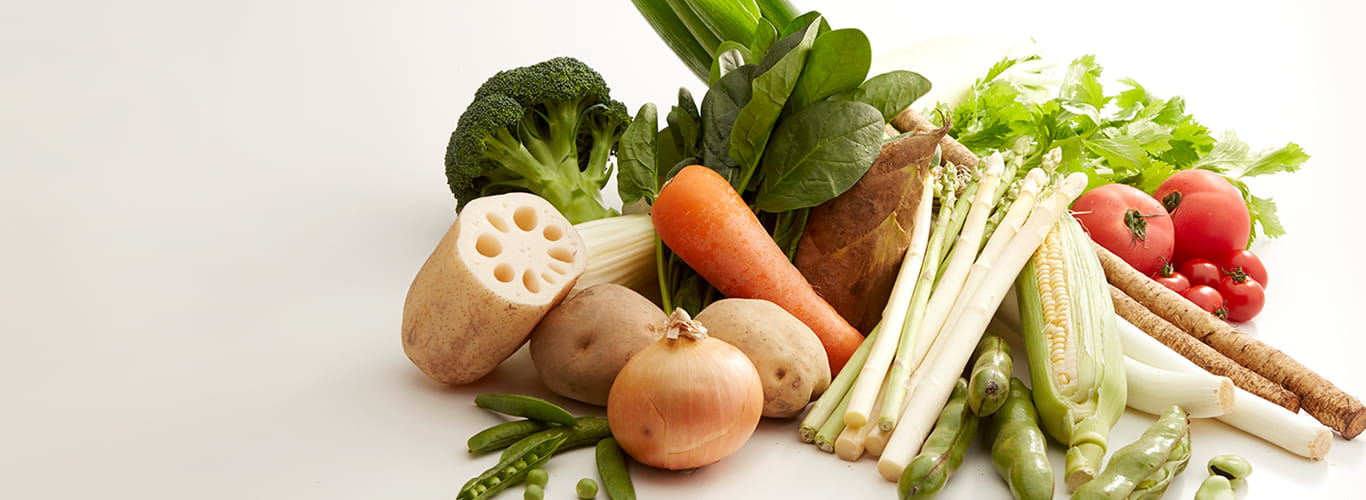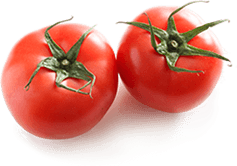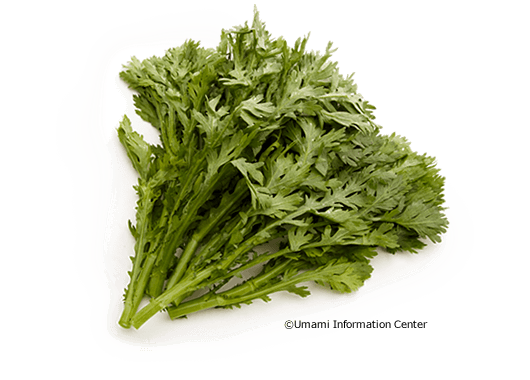A well-known leafy green vegetable especially delicious in the winter. It originated in the area stretching from the Caucasus region to Iran between Europe and Asia. Because it contains oxalic acid, it
is boiled and soaked before eating. It is rich in the umami compound glutamic acid, as well as iron, potassium, carotene, vitamin C, folic acid, etc. Spinach is a vegetable used in a variety of ways,
including in boiled greens, chopped dishes, stir fry cooking, potage soups, etc. Recently, an improved spinach has been cultivated to be used raw in salads.
- Levels of naturally occurring glutamate(mg/100g):50~70




























